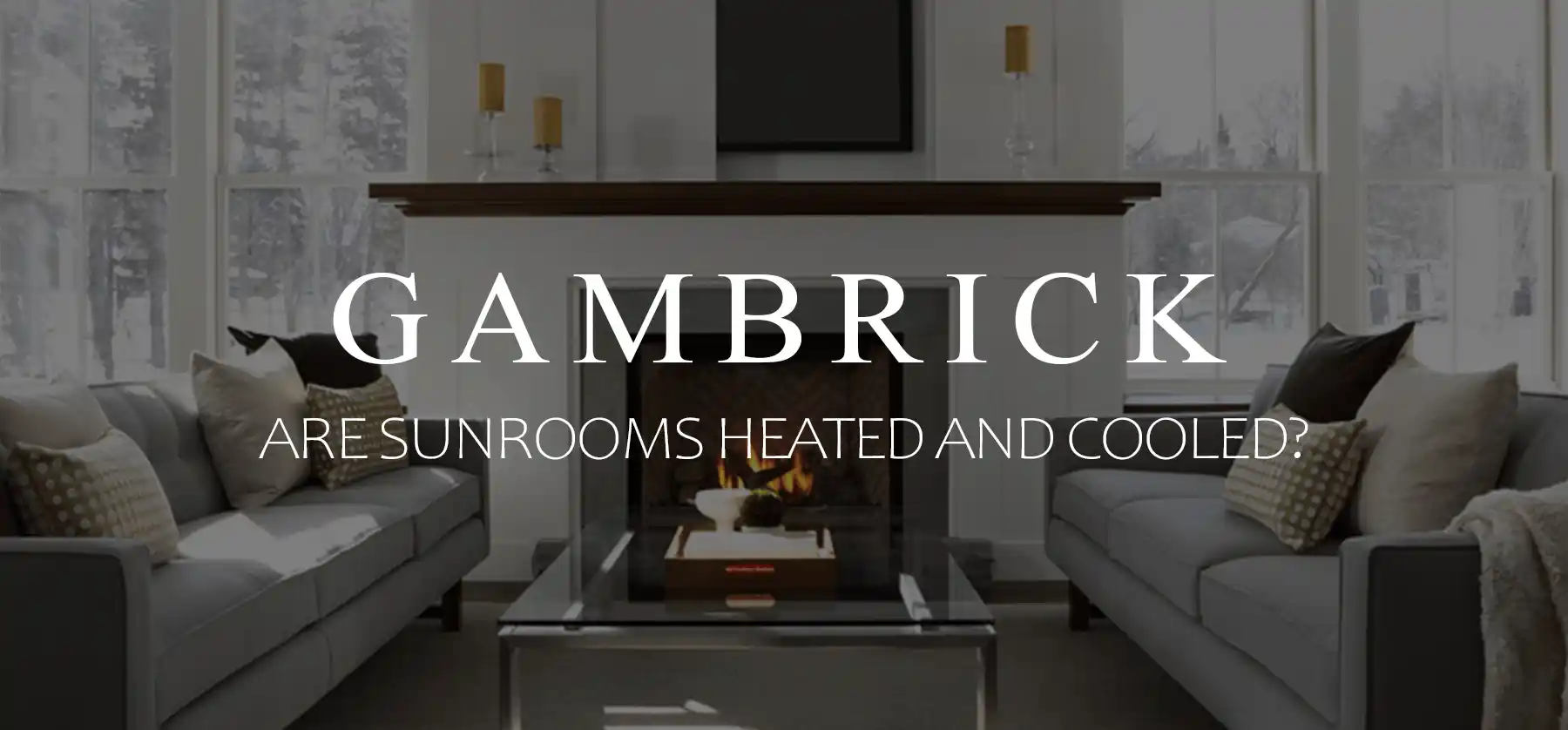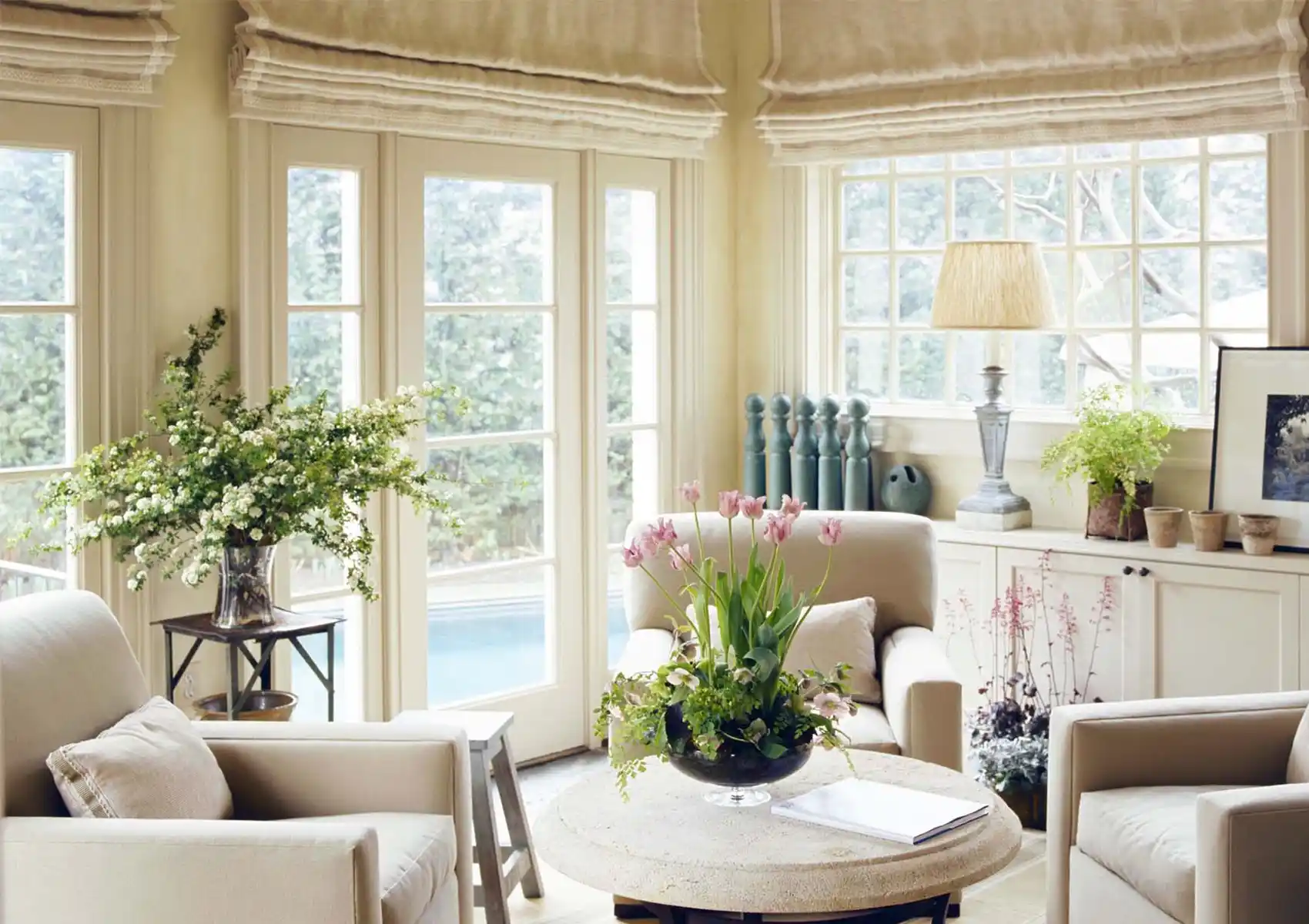
Are Sunrooms Heated And Cooled?

By John Mazzuca | About | More Posts |
John Mazzuca is a custom home builder with over 25 years experience in the construction industry. John has designed, managed, and built hundreds of homes & construction projects.
Sunrooms come in various types, some are heated and cooled and some aren’t. Heating and air conditioning along with other options like electricity and insulation depend on the room’s design and how/when it will be used.
Four-season sunrooms are designed for year-round use and include electricity, insulation, heating, and usually cooling. They’re built with thermal-resistant materials, including insulated glass and walls, to maintain a consistent temperature year-round. These sunrooms are often integrated with the home’s central HVAC system or may have dedicated heating and cooling units such as mini-splits, allowing them to be comfortably used in all seasons.
Three-season sunrooms aren’t equipped with heating and cooling systems. They’re designed for use from Spring to Fall, excluding extreme weather periods like the cold of Winter or the high heat of Summer. These structures usually lack the insulation necessary for efficient temperature control, but many homeowners use portable heaters or fans to extend their usability during cooler or warmer days.
Solariums and conservatories are special types of sunrooms made entirely of glass and either be a three-season or four-season room. If they’re used throughout the year, they’re built like four-season rooms with appropriate insulation, heating, and cooling systems. Otherwise, they’re similar to three-season rooms, with limited or no temperature control.
I’ve been a NJ sunroom contractor for over 25 years and can tell you firsthand that there’s no standard requirement for sunroom heating and cooling systems unless it’s a four-season room.
Whether a sunroom is heated and cooled depends on its intended use and construction. Four-season sunrooms are designed for comfort in all weather conditions, while three-season sunrooms usually lack built-in heating and cooling systems, making them more dependent on the external climate.

The Best Heating & Cooling Options for a Sunroom
Sunrooms are typically built as an addition to an existing home and not part of a new construction. This means the space isn’t factored into the home’s heating and air condition units, so they either need independent heating and cooling or they must tap into the home’s current system. Both options can work, but there are some things you should consider before making a decision.
Here’s a streamlined guide to your options:
- Integrate with an HVAC Upgrade: If your home’s HVAC system is due for an upgrade, consider a system that extends to the sunroom. This integrated approach allows for uniform temperature control throughout your home but can be a costlier investment.
- Portable Heating: For a cost-effective solution, a space heater can warm your sunroom. This option is ideal for smaller spaces and milder climates.
- Extend Current Vents: You can extend your home’s existing air conditioning vents to the sunroom. Before doing so, verify that your current system can handle the additional load.
- Window A/C Unit: For cooling, a window air conditioner is an economical and straightforward choice. While it operates independently from central air and requires seasonal installation and removal, it’s a practical solution for temperature control.
- Ductless Systems: A ductless mini-split system is an efficient option if your existing HVAC can’t support an additional room. This system, which includes an external unit and an interior wall-mounted unit, provides both heat and air conditioning.
Each option has its trade-offs in terms of cost, convenience, and aesthetic impact, so consider your specific needs when making a decision.
For heating and cooling to work effectively, you also need insulation. In some cases, this is even more important than the heating and cooling system. Make sure your sunroom is properly insulated along with choosing a heating and cooling option.
The Importance of Insulation
Insulating a sunroom is essential when it’s designed for both heating and cooling. Insulation significantly enhances energy efficiency and comfort by regulating the temperature inside the room. Without insulation, your heating and cooling would be lost through the windows, doors, walls, floor, and ceiling. This is called heat loss.
Proper insulation ensures that heat is retained during the Winter and reflects excess heat in the Summer, leading to substantial energy savings. It also maintains a stable temperature inside the sunroom, providing a comfortable environment throughout the year.
Adequate insulation helps prevent condensation, which can result in mold and mildew growth and an ugly appearance. It also helps protect the furniture and fabrics from the harmful effects of UV rays and temperature extremes.
The most effective insulation for a sunroom includes the use of double or triple-pane windows with low-E coatings. This drastically reduces the amount of heat transfer through the glass. Since sunrooms use so much glass, this is something you should consider for your sunroom.
In addition to using insulated glass, make sure all window and door frames are also insulated. Add batt or blown-in insulation to all wall, ceiling, and floor cavities. I recommend R-19 to R-23 in walls and at least R-30 to R-38 in floors and ceilings.
For sunrooms that aren’t built on solid foundations, insulating the floor is vital to prevent cold air from entering, especially if the sunroom is elevated.
In regions with intense heat, installing radiant barriers can be an effective way to deflect heat and keep the sunroom cool.
By integrating these insulation strategies, a sunroom can be a more energy-efficient space that can be enjoyed comfortably all year round.
If you have any questions or comments email or leave a comment down below.

John Mazzuca | About | More Posts |
Custom Home Builder
John Mazzuca is a custom home designer and builder at Gambrick with over 25 years experience in the construction industry. John has designed, built and/or remodeled hundreds of homes, small buildings, and commercial projects. He writes about business, real estate, home building, and household electronics. His work has been featured in Fox Business, Better Homes & Garden, House Beautiful, and more.



















